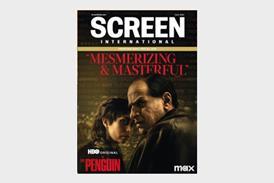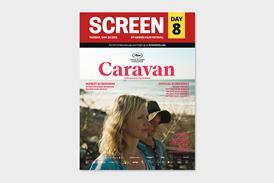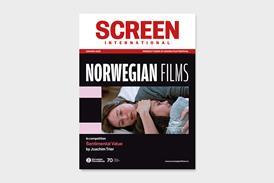One of the most anticipated speakers at London’s Power To The Pixel annual Cross-Media Forum (Oct 16) will be Sean Stewart, co-founder of L.A.-based Fourth Wall Studios.
Stewart was an award-winning science fiction and fantasy author before turning to digital narrative, starting with alternate reality game, The Beast.
Stewart will kick off the Forum with the keynote address, “Storytelling V: The Audience Strikes Back”, focusing on the changing relationship between storyteller and audience in the digital age.
Screen talked with Sean Stewart for a sneak peek at the topics to be covered in this week’s forum and about the future – and the past – of storytelling in the digital age.
Most people are familiar with at least the terms “transmedia” or “cross-media” and a language is developing to allow discussion to take place. Still, a lot of the entertainment industry is still just feeling its way around. How would you characterise the state of transmedia today?
The novel exists because the printing press exists. There was a technology platform and someone figured out “Hey, you can use that for storytelling.” Then they slowly started making the kinds of stories that that machine was good at producing and getting them to audiences in the way that machine worked. And the motion picture camera was another piece of technology that changed the way you could tell stories and the first thing people did with it, storytelling-wise was film stage plays, and then they slowly figured out all the ways in which a motion picture isn’t really the same thing as watching a stage play. And that’s where we are right now with transmedia. The internet is a printing press and we’re all trying to figure out the kinds of books that it makes. It’s got a set of capabilities, but we’re all in D.W. Griffith’s territory of trying to figure out what’s a cut, what’s a transition, what two things put together feel good and what two things put together feel confusing. And, yes, people are coining a lot of words for basically “Hey, we have a whole bunch of tools here. We should use them.” We’re all still exploring what kinds of stories that this printing press wants to tell.
When the printing press was invented, the first thing they started printing was Bibles.
Yes, they did thing every new communications tech always does - the first things they made were Bibles and porn!
Which was where the power and money was. So are we seeing the same thing now with very entrenched, powerful companies trying to do what they’ve always done before, but just trying to do it in a “transmedia” way?
Yes. And that’s not wholly going to work, for a couple of reasons. By and large, however much a railroad company wants to be in the airline business, it just doesn’t work out that way, because what they make is trains. So they look at it and they say, “We have capital, we have resources, we understand transportation, we have the connections, we need to be in the airplane business” but it doesn’t happen, because you know what? They make trains for a living. So there is going to be a generation in which traditional media companies try to harness the transmedia space and some of them will be more successful than others, but at the end of the day, that’s not what they do and that’s not the world they come from. If you look at broadcast television networks, every single individual you speak to knows that they need to be online, but all of them get paid based on whether or not people show up and watch their shows at 8pm on Tuesday night. So no matter how much they theoretically want to be in that space, nothing about the structure supports them being in that space. The other thing underlying is that we have for a long time been working in a broadcast model: The word comes out from an authoritative source and then everybody at the other end hears it. It’s a one-to-many. But we’re shifting now from that model to peer-to-peer model, where everybody gets a little bit of everything, and in that model it’s much harder to centralise power and, for that matter, it’s a lot harder to centralise capital.
And ways of engaging the audience are changing too.
Yes. As an example, if you go to FanFic.net right now and look up stories set in the Harry Potter universe, there were, as of yesterday, 612,413. That means there are more stories set in the Harry Potter universe on one fan site than there are words in the first Harry Potter novels. J.K. Rowling is the most important writer in the Harry Potter world, but not the only writer who is important in the Harry Potter world. She does not control Harry Potter in the way that Conan Doyle controlled Sherlock Holmes or Ernest Hemingway controlled For Whom The Bell Tolls. It is a different relationship now. That’s one side of this kind of democratisation that digital platforms enable that makes them a little harder to be controlled from any one spot. And another side of that, talking about capital, is Kickstarter an example of the democratization of capital in communication and entertainment. A lot of Kickstarter’s biggest success stories have been take a game, book, world, series and expand it in a way that the bigger corporations could not risk, but that individuals are willing to support.
What do think are some of the most interesting trends in transmedia and digital media right now?
To get it out of the way, I think we’re doing a really interesting thing here at Fourth Wall in developing a kind of repeatable, reusable format for transmedia storytelling. Traditionally, these projects have all been custom, one off, bespoke things. I think there’s some value in putting together a toolkit for crossmedia storytelling that all kinds of different people can use and make it reusable, so you’re not always writing custom code to do this stuff. In other areas, there’s still more advertising money spent on print, even though people spend vastly more time in the digital space. So I think that titanic and inexorable move from where people aren’t to where they are is going to keep going and accelerate. And I think the line between the computer, the tablet and the mobile phone will continue to dissolve. And in the long-run, you’re going to see more and more web-enabled television. We’ve been working a lot on two-screen applications where you can see video on your laptop and video on another device. I think you’re going to see more of that coming down the pike. Two years from now you’re going to see a lot of shows that run video on your television but there are also things happening in concert with that on your phone. And finally, the last trend is that it will become easier and easier and easier for the average audience member. When I first started out, we were making this incredibly complicated, really fun stuff that very few people were actually going to be interested in. A lot of people right now are constantly working on how to emphasize the fun parts and make it really easy?





![Benjamin Kramer Headshot Photo Credit_CAA[40][40]](https://d1nslcd7m2225b.cloudfront.net/Pictures/274x183/6/6/4/1455664_benjaminkramerheadshotphotocredit_caa4040_107707.jpeg)
















No comments yet